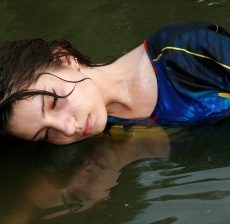Lie: Things I can’t sense do not exist, and if they do, it doesn’t matter.
Truth: Most of reality, even most of what is important, cannot be seen or sensed at all.
We see through a glass darkly, but then face to face. — I Corinthians 13:12
We experience so much today – our eyes are assaulted with images, our ears with sounds. We are drenched – overstimulated by a world of TV images, phone apps, YouTube, iTunes and more. The sheer volume of sights and sounds quickly overwhelm our senses. It’s no wonder we forget the unseen world when the seen-world fills our vision.

